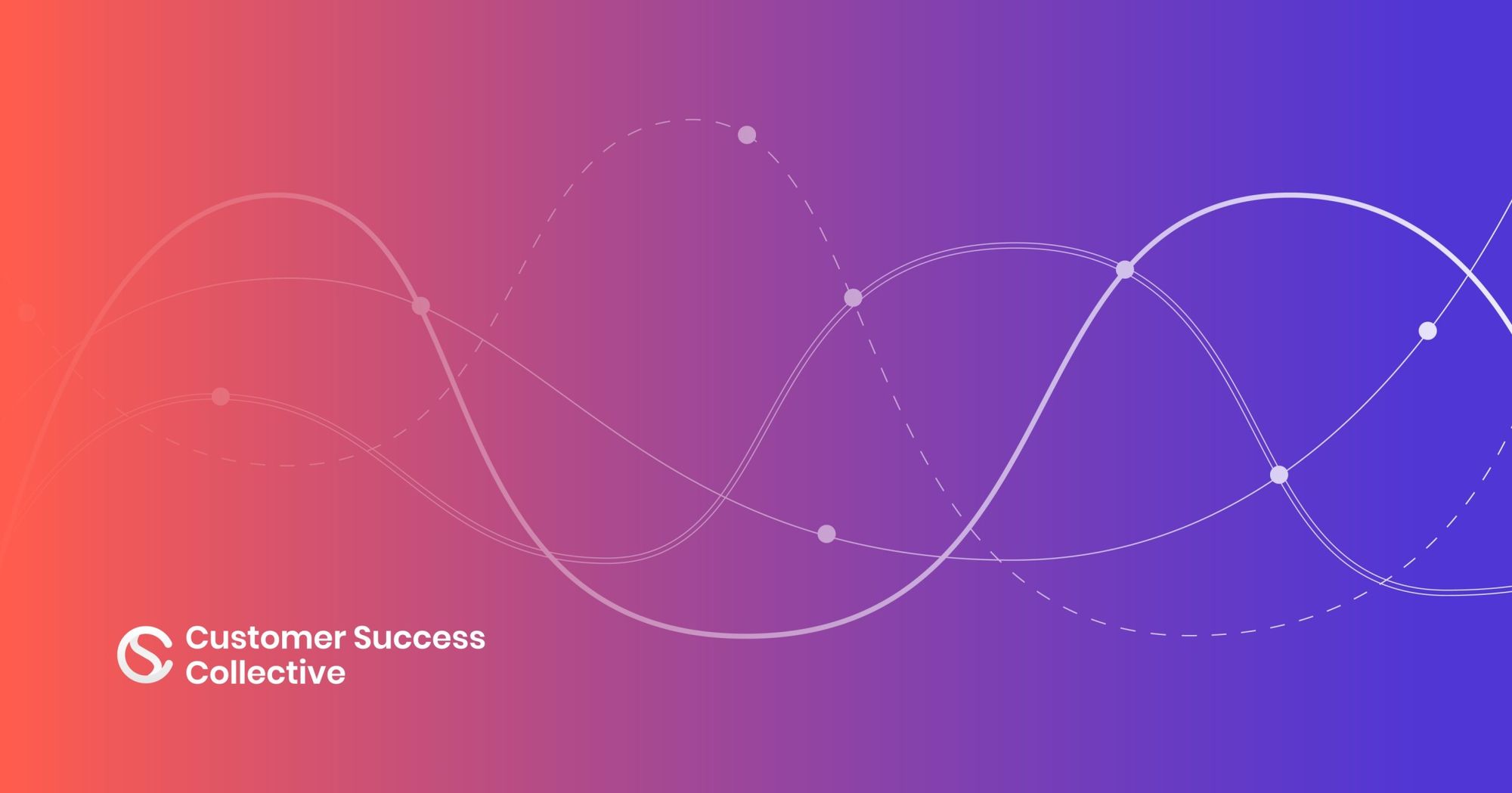At the Future of SaaS Festival in June 2022, Michael Hill, Strategic Customer Success Manager at Madison Logic, led an expert panel discussion on the importance of customer success within your organization's SaaS model, the importance of CS within your business strategy, and the key metrics that the panelists wanted to focus on.
Their main talking points include:
- Introductions
- Meeting complex business needs with CS
- CS: Nice to have or mission-critical?
- Communicating the value of CS to the rest of the organization
- Aligning on goals with the customer
- Sharing action items with other stakeholders
- Choosing the metrics that make sense for your CS function
Introducing our panelists
Melissa Hatter: I'm a Customer Success Lead at Stripe. My team here is focused on our tier-one customer segments.
I've been at Stripe for just over a year and a half, and prior to joining Stripe, I spent 15-plus years building and leading customer success and account management teams at large companies, primarily in the media and media tech space as well as some early in mid-stage startups.
For those of you that aren't familiar with Stripe, we're fundamentally a payments processing company but with lots and lots of adjacent products and services that are centered around helping our customers grow their businesses.
Our broader mission is growing the GDP of the internet, and we do that by making the movement of money between people, companies, countries, and currencies as simple as possible.
Brittany Yandura: My name is Brittany. I work as a Senior Manager of Customer Success for a really exciting startup called Fieldguide. I've spent about 11 years in the CS space.
I would say my specialty is onboarding, but now, working at an early-stage startup, we don't really have specialties – you kind of do it all, which is incredibly fun.
Fieldguide is a series A B2B SaaS startup, and we focus on risk-based audits, especially cybersecurity audits, and we’ll soon be branching out into other risk areas. We sell primarily to audit firms and other specialized companies that perform cybersecurity and other types of risk, assurance, and compliance work.
Michael Hill: Thank you for those introductions. This is an interesting discussion you’re from companies of very different sizes that have different ways of achieving the same goals, which are happy customers and growth.
Could you tell us about your company's business model and how your CS department works within that?

Melissa Hatter: At Stripe our model is primarily, but not exclusively, a consumption model. We were founded in 2009 and at that time, we were mostly a payments API that was leveraged by startups and small businesses.
That's very much not the case today. Over the past 13 years, we've become a full-blown platform for payments and we now serve the entire spectrum of company sizes.
Small businesses and startups are still very important to us, but now we also work with some of the largest companies in the world too.
They're using our software and services, but also our hardware, including Terminal, which is our point-of-sale product. We also offer banking as a service products.
We’ve always had an account management function, but until recently there wasn't a customer success discipline. We built that function in the past year and a half. When I joined, we pivoted to implement the customer success org.
We wanted to make sure that we aligned our account support and strategy with our key operating principles, one of which is ‘users first’.
Today, the Stripe customer success org supports just the top tier market segments globally, but with big plans to scale our function and expand to many, many other segments and tiers.
Meeting complex business needs with CS
Michael Hill: It’s interesting how the function has evolved. Why do you think the company went from focusing on account management to bringing in customer success? Was this a conversation that you had with your executives?
Melissa Hatter: It was leadership-driven, and it was absolutely the right decision. As we started working with these large, complex organizations, we recognized that an account manager couldn't really specialize, and these companies needed specializations.
The account manager was a jack of all trades, doing everything from commercials to the traditional CS motion – upsells, renewals, expansions, and all that.
Our Chief Revenue Officer (CRO) looked at this and said that for these types of companies, there needs to be a specialization, so we separated out the functions.
Today, the Account Executive is focused on the commercial success of an account, while the Customer Success Manager is responsible for their health and optimization, and then we have a technical account manager to deal with technical questions and needs.
By doing that, we’re able to specialize in a way that works for large clients. Taking on these types of clients forced us to look at how we supported large accounts and drove the model change and the introduction of a standalone customer success function.
CS: Nice to have or mission-critical?
Michael Hill: Do you think CS is seen as just nice to have or a critical contributor to your organization?
Melissa Hatter: It’s absolutely critical. That's why it was formed in the first place.
As it's new, it's important that everybody understands the role and why it's critical. So, when we first began building the team, we wrote our customer success team’s mission and charter and shared it across the organization.
If you don't have that in your org, I highly recommend creating one. It's what we use as our founding document and to make sure that everybody internally knows our reason for being and what we’re trying to accomplish.
That mission is to ensure that our most strategic and valued users derive the maximum value from their Stripe investment. To do this, we focus on improving overall health and ROI by making sure that the way our solutions are deployed is fully optimized.
By helping our clients unlock this optimal usage, we naturally contribute to stronger customer engagement and loyalty, so our org sees us as critical contributors because we're key to driving the broader mission.
Michael Hill: Brittany, what is CS’ perceived value within your organization?
Brittany Yandura: One of the things that drew me to where I currently am is that our executives have been committed to CS being critical from day one.
I think I was employee number seven or eight at the company because even very early on when they were just starting to establish product-market fit and get a customer base, they knew that CS was going to be important.
What that looks like will continue to evolve as we grow. Starting out, CS was just me – a single person – looking after anything post-sales, and that will evolve into more robust and specialized roles, but it won't change how important the function is.
Michael Hill: Brittany, you mentioned that you specialize in onboarding. I would assume that your executives felt that once that sale is completed, they need to know that your customers are interacting highly with the product.
Is that why they view CS as a critical component? And do you see that evolving?
Brittany Yandura: I think there are a few reasons why CS is so critical to our company. Initially, it's about making sure that we have really strong adoption and engagement with the product, so that onboarding piece is important.
Longer term, it's really important to have someone who's listening to the customer and communicating what they have to say throughout the organization.
That way, as the company and the products grow, they grow in a direction that supports the goals and outcomes that customers are looking for.
We look at anything post-sales as R&D. We're learning from the customers what's important.
That helps us prioritize and make sure we're not developing in a vacuum, but rather taking in what's important to our current and future customer base and directing the company towards those things.
Communicating the value of CS to the rest of the organization
Michael Hill: I imagine there are a lot of people out there in smaller organizations, where CS is wearing a lot of hats right now. What can they do to raise the perceived value of CS in the company to the executives?
Melissa Hatter: I think that's a great question because it's really easy for customer success to be stereotyped or perceived in a certain way. I've seen it happen that CS is looked at as glorified support.
That's not to say that support is not important – it’s a critical function – but we risk being looked at as purely operational firefighters.
In reality, a strong customer success discipline brings incredible value. In fact, investors often look at whether or not an organization has invested in customer success when they value companies.
My advice for CS teams is to actively look at ways to sell their value internally. That can come in a lot of different flavors, and they should be creative.
You could run internal roadshows, socialize wins, or share case studies. However you choose to do it, make sure that you're reaffirming the value that you bring.
For example, at Stripe, one of our signature deliverables as a CS team is something called a PLT – a proactive listening tour.
That’s an exercise that our CSMs run for interviewing internal and external stakeholders if there's a major client issue or a big event coming up.
We've been doing this for two or three quarters now, and we've gotten some incredibly insightful and actionable items out of it. It's impacted renewals and activity.
To share this, we're going to be doing a retrospective with our revenue leaders where we'll tell them about this process, the wins that we've gained, and the important insights that we've learned.
I think that's going to help us raise the visibility of what we do. One of your greatest superpowers as a CSM is your intimate knowledge of your accounts, and this is a great opportunity to leverage and share that.
Another example of a signature deliverable is a playbook we've created, called 'Account Team Goal-Setting'.
That's where everybody who touches an account gets together to plan and align around short, medium, and long-term goals and even the moonshot goals because sometimes goals and incentives for different stakeholders in an account could vary.
I think of CS as a sort of hub and spoke to all of these different disciplines and departments, so having CS run something like that is a really good way to make an impact and raise your visibility because you're the facilitator of creating an account strategy.
Aligning goals with the customer
Michael Hill: It sounds like goal alignment is at the foundation of taking CS from operational firefighters to a proactive team. Is there something that you do early on, maybe when onboarding the new customer, to measure those goals?
Melissa Hatter: We only deal with existing business – clients that have been onboarded and are in more of a steady state. However, I know that the team that does onboarding has those conversations to make sure that there's goal alignment.
When we assign a CSM to an account, there is a protocol for the handoff where the historical information is shared. We have a template so we can collate all the important things we need to know about the history of this customer.
What are their hot buttons? What are they looking to accomplish as a business, and how do we fit in?
The way our CSMs engage in this is more client-facing. We have something called a quarterly performance scorecard. Essentially, it's a tool where we ask our clients to provide the factors by which they're measuring us as a partner – uptime, SLA, and that kind of thing.
We align on what those measures are with our stakeholders and clients, and then at the end of each quarter, we'll ask our clients to grade us based on their experience and perceptions of what's happened.

That scorecard is something that we use quarterly, and it provides a forcing function for our customers to tell us in a pretty direct way where we're missing the mark and where we’re hitting it. Our CSMs and account teams can then direct their attention to the most important areas.
It's a really useful tool to leverage in things like QBRs. It also helps us raise CS’s visibility internally as we share what we're learning about accounts with other stakeholders.
The scorecard gives us something to point to and say, “Hey, this user gave us an 'A' here, a 'B' here, and these are the gaps that we need to focus on.” That also leads to product conversations, etc. That quarterly performance scorecard is a really useful tool for us.
Sharing action items with other stakeholders
Michael Hill: When you gather this information from customers on what’s going well and what could be improved, how do you communicate the actions that need to be taken to other people in your organization?
Brittany Yandura: When you're speaking to internal teams, it's really important to know your audience. For example, if I'm speaking to a product team, I'm going to phrase things in terms of a user story.
Here's what the user is trying to do. Here's where there are pain points. Here's where they're losing six seconds of time. I make sure I talk about it in terms of what product is interested in.
If I'm talking to our CEO or someone more on the revenue-focused side, I might focus on some bigger picture things, like if we went after this specific sub-area of the business, we might do 25% more.
So sometimes it's more qualitative, sometimes it's more quantitative. It’s about knowing your audience and communicating to them in their language. If I come at everybody with NRR, ARR, and NPS, I'm going to lose them.
Choosing the metrics that make sense for your CS function
Michael Hill: What metrics do you focus on in your CS functions?
Melissa Hatter: We're building our metrics strategy right now. There are so many metrics and so many numbers in FinTech, so it's important to focus on anything that gives a real signal. We need to understand what moves the needle and is actionable.
The things that we try to distill down for sharing internally are a combination of things like engagement, volume, and SAT with a color commentary.
As I mentioned, we're in the process right now of formalizing our value and health metrics and what inputs will go into that, but SAT is one of them.
For the first time ever in Q1 this year, we did our CSAT on our clients with CSMs. I often get questions about why we chose CSAT over NPS, but in payments tech, I'm just not sure how much the fundamental NPS question is a good one because I don't know how many people actually recommend a payment system to a friend.
I recommend choosing the scoring methodology that makes sense for your business, but it comes down to what's going to give you the best signal for what you're trying to accomplish, and then you have to develop ways to operationalize that.
Michael Hill: Brittany, you use NPS, right? What has been your experience with that?
Brittany Yandura: NPS has been really helpful to us, and CSAT is an area we're interested in getting into as well; we just haven't quite crossed that bridge yet. For NPS, what I think is most valuable is not just collecting the scores, but what you do with them.
In the application that we sell, we have a customer side, and we also have a side for our customers’ clients. We collect and analyze NPS on both sides of the application, and then we figure out what to do with it.
For example, when we saw that we were getting really mixed feedback on the client side, we started running a weekly client webinar.
That way, we're helping those that are struggling and we're meeting with them more directly and getting detailed feedback that will help us improve the application. Our hunch is that there are small things we can update and make a big difference.
It's about more than just trying to raise our score; it's about what that score means. We want to make sure that those users are satisfied.
NPS, or really any score, is only as helpful as you make it, and when you collect that information, you want to make sure it’s actionable and your CSMs feel empowered to dig in and experiment to figure out how to make that better.



 Follow us on LinkedIn
Follow us on LinkedIn






